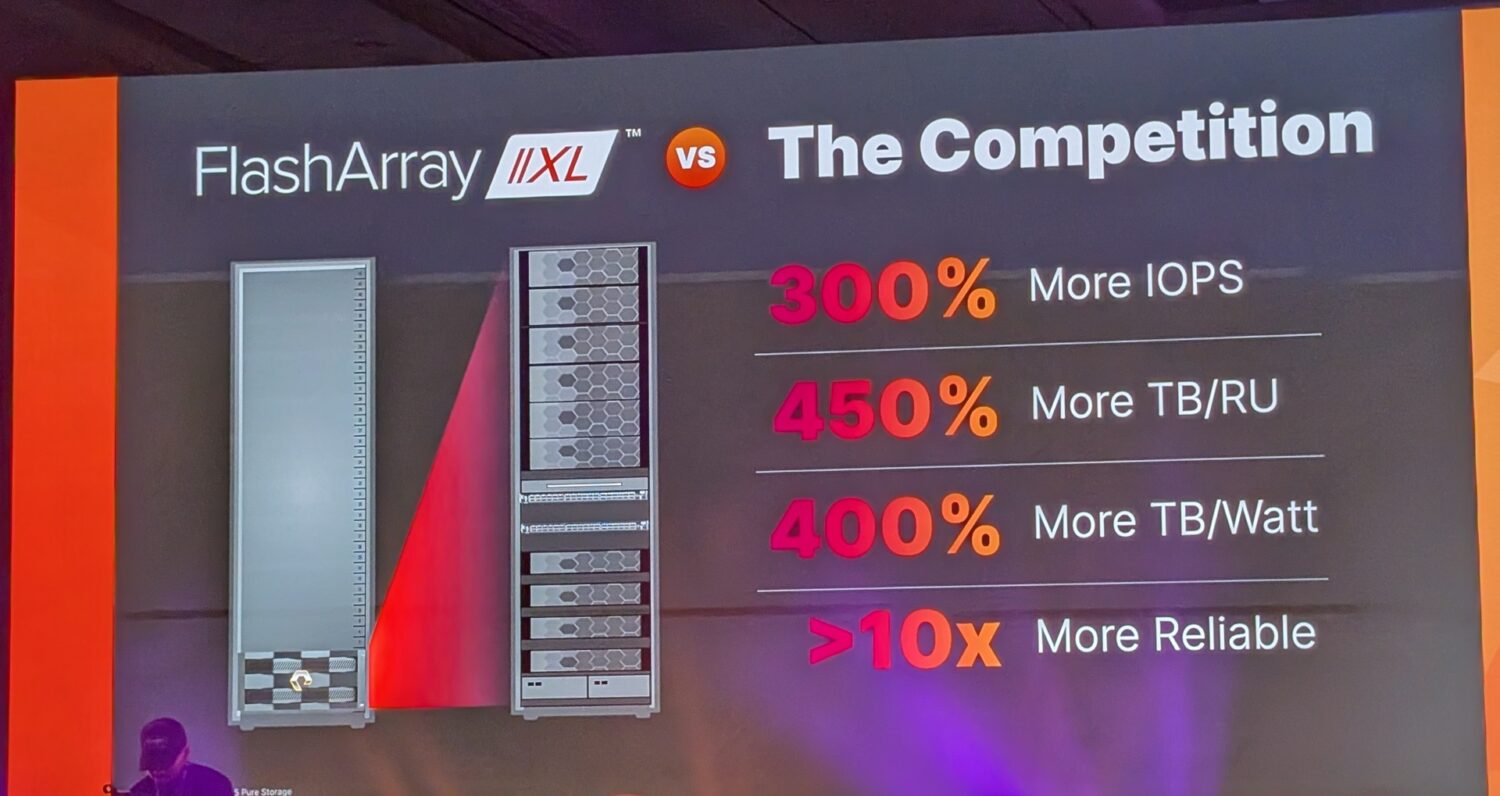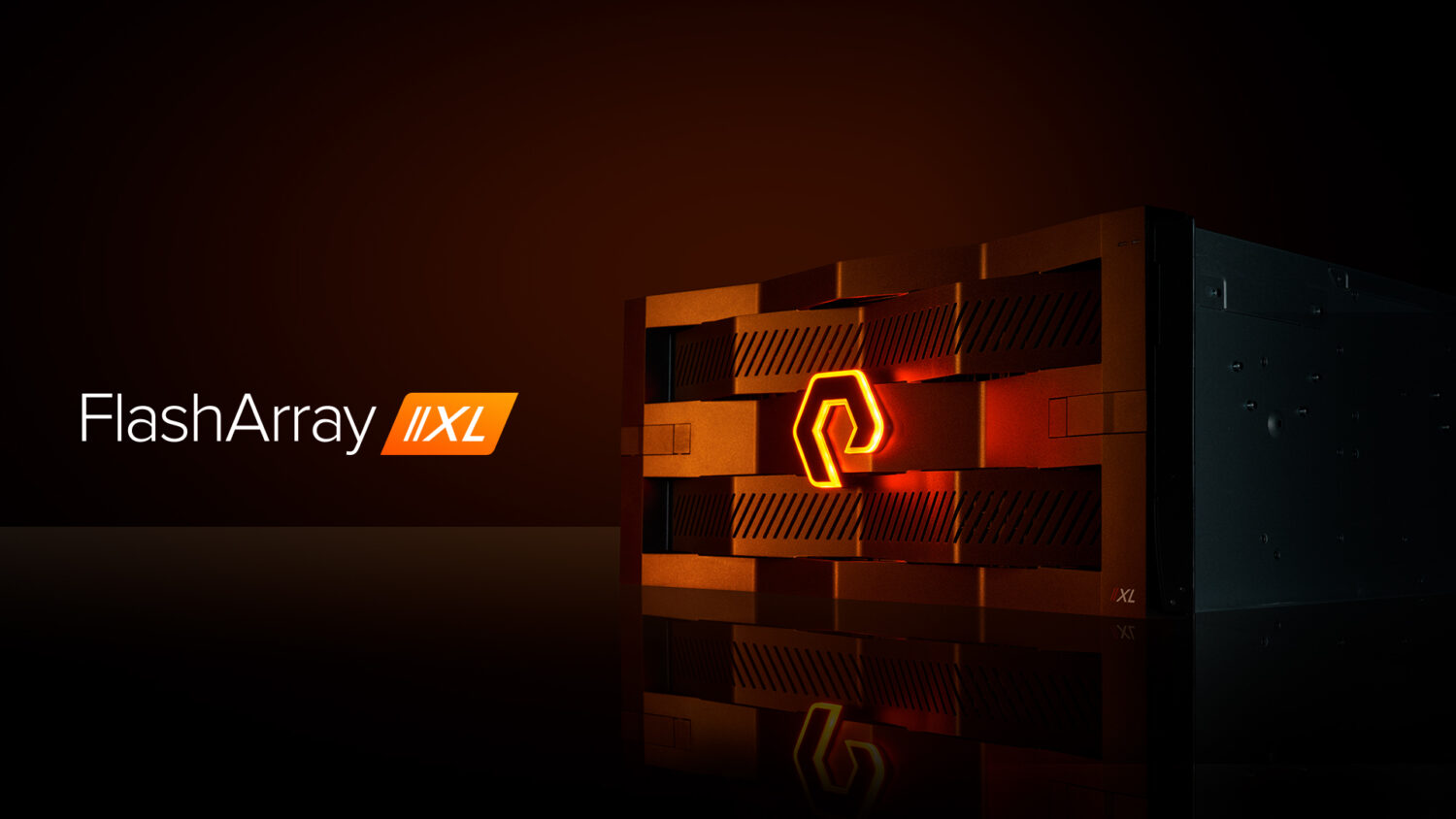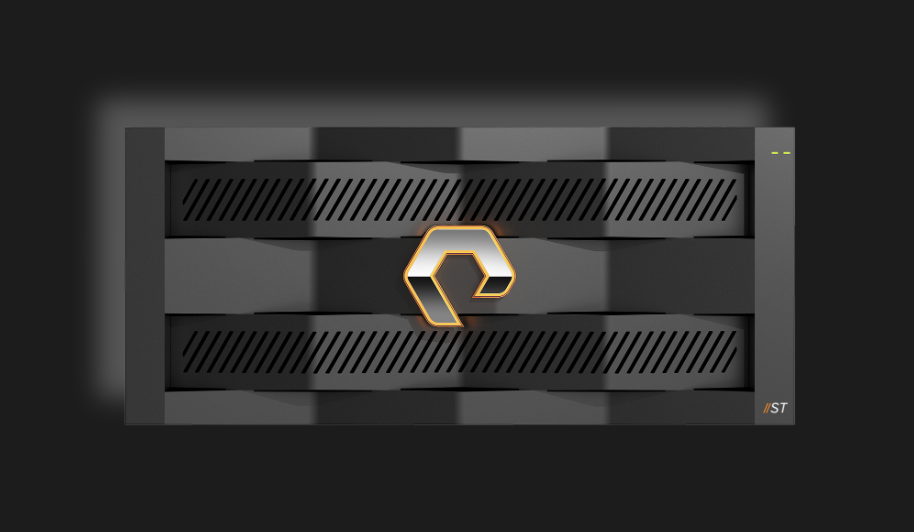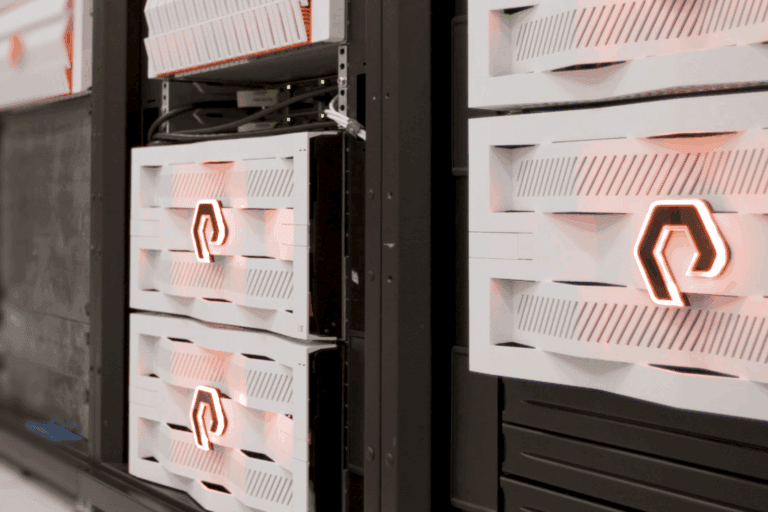During Pure Accelerate in Las Vegas this week, there was a lot of talk about the introduction of the Enterprise Data Cloud. We published an article about this earlier, including our initial analysis (see link further down in this article). However, we also received some important product news, which we will summarize in this article. There are some big surprises, including a new FlashArray model with a ‘standard’ SSD, a storage medium that Pure normally wants nothing to do with.
An intelligent management layer such as that offered by Pure1 and Pure Fusion is certainly interesting. However, it is impossible to do this properly without the underlying data layer offering the capabilities that customers actually want. That is why Pure is introducing updates to its existing portfolio as well as completely new products and features.
Updates for FlashArray and FlashBlade
First, there are two major updates for existing systems. There is the FlashArray//XL R5, an update for the top model in the FlashArray//X line. This FlashArray has a raw capacity of 1.9 PB, is 70 percent faster than its predecessor, and can scale up to 50 percent further. Compared to the competition, Pure claims that the rest don’t even come close. See the image below.

In addition to the FlashArray//XL R5, there is also a successor to the FlashBlade//S, unsurprisingly called the FlashBlade//S R2. That model, aimed at scale-out environments, had not been updated since its launch in 2022. The latest version, which like its predecessor supports file and object workloads and protocols, is 30 percent faster than the competition for key workloads, according to Pure.

It is also worth noting that FlashArray//EXA, the variant aimed at AI Factories, is now generally available. You can read all about this product in the article we recently wrote about it.
FlashArray//ST
In addition to the above update for existing models, Pure is also announcing some truly new things today. The FlashArray//ST is joining the product range. This new model is all about speed. The four capital letters in the name clearly indicate this. Pure promises more than 10 million IOPS, which seems to be a conservative estimate based on conversations we had with Pure spokespeople.
The FlashArray//ST is intended to be an alternative to the fastest Direct-Attached-Storage on the market. It only supports block workloads. This makes sense, as these are the only workloads that need to use this type of fast storage. Think of in-memory and OLTP workloads. The latency of this new system can be as low as 55 microseconds.
No DFMs in FlashArray//ST
At first glance, the latest addition to the FlashArray family looks very similar to the FlashArray//XL. That is, it comes in the same box. However, upon closer inspection, there is a surprise inside. It’s actually more about what’s not there. The FlashArray//ST does not feature DirectFlash Modules (DFMs), Pure’s proprietary flash modules. Pure announced a version with a capacity of 300TB at this year’s Accelerate event.
We were unable to find out what it does contain during the event. Alex McMullan, Pure’s CTO International, was willing to tell us that it is PCIe 5.0 SCM (Storage Class Memory), but did not elaborate on what exactly it is. Pure will be able to provide more information soon. There is little point in speculating, but given the focus on performance, it is almost certainly TLC NAND. If we also bear in mind Kioxia’s announcement last month about the 8th generation BiCS flash, that could well be the NAND flash that’s inside the FlashArray/ST. However, that is all speculation at this stage.
The fact that Pure has chosen not to release DFMs in the FlashArray//ST is not extremely surprising though. DFMs are basically designed to provide balance in terms of performance, capabilities, power consumption, and so on. The FlashArray//ST is a Formula 1 car. It has to go as fast as possible. In that case, DFM as it currently stands is simply not the right choice.

Will future generations have DFMs?
Still, it’s a strange idea for Pure to announce a product without DFM. It likes to claim that SSDs are inferior to DFMs because they were created as a replacement for HDDs and therefore follow the same principles. And now one is popping up in one of the company’s products. When we point out that we find this a bit unusual, Patrick Smith, Field CTO EMEA at Pure Storage, hints that this is most likely a temporary situation. Ultimately, Pure will most likely also put its own spin on this and include them in the DFM line.
The FlashArray//ST is a project that got a bit out of hand, McMullan explains. Initially, it was a request from a customer. During its development, however, Pure realized that this could be interesting for more organizations. So Pure decided to productize it.
In addition to the difference in hardware, there is also a big difference in the software. As mentioned, the FlashArray//ST only supports block workloads and protocols. In addition, Pure has removed all unnecessary services that add latency. Examples include inline deduplication, inline compression, post-batch compression, synchronous replication, and a number of others. Essential features such as snapshots, asynchronous replication, and encryption will of course remain available.
FlashArray gets S3 support
A final update on the hardware front is not really hardware news. The FlashArray line will now offer native support for the S3 protocol. Those in the know will understand that this refers to object storage. Until now, FlashArray models only supported block and file, but Pure is now adding object storage.
With the addition of object storage to FlashArray, Pure will eventually be able to offer a single architecture across the entire platform. FlashArray can now work alongside FlashBlade on object storage, i.e. FlashArrays at the edge can replicate to FlashBlades in the core data center. Pure promises that it will also add cloud interoperability in the future. This will enable Pure to cover the entire breadth of the infrastructure when it comes to object storage.
Pure continues to develop in breadth and depth
The hardware announcements made by Pure this week clearly show how Pure views the market. On the one hand, it wants to show existing customers, particularly Evergreen//Forever customers, who always receive the latest and best products, that it continues to update its existing and proven products. On the other hand, it is not afraid to take new steps. Even if that means launching a model without DFMs.
Ultimately, Pure has no choice but to do this, because without a solid foundation of FlashArrays and FlashBlades, it cannot credibly sell its Enterprise Data Cloud vision. The addition of S3 to FlashArrays can also be seen in this light. Creating an end-to-end platform is an important prerequisite for making and keeping things as simple as possible, something that is central to Enterprise Data Cloud and Pure Fusion. Pure continues to succeed in this because it made some fundamental and sometimes radical decisions a long time ago. After all this time, those decisions are still paying off.
Read also: Enterprise Data Cloud is a logical but important evolution of the Pure platform
